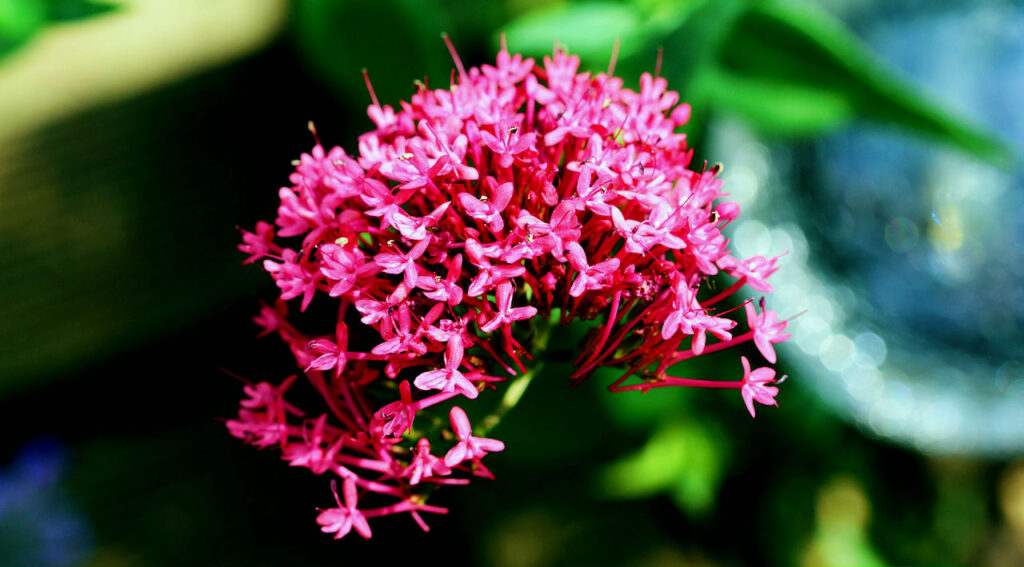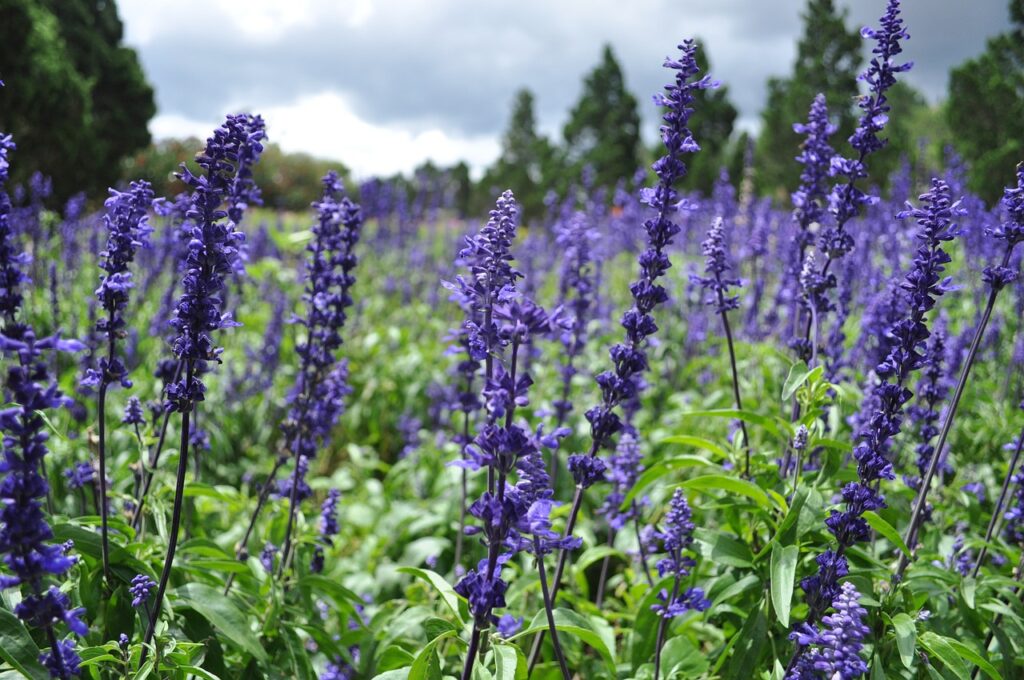Spikenard Essential Oil: What You Need to Know
Flowers are beautiful little treasures, aren’t they? Today, we’ll be taking a look at a wonderfully scented essential oil derived from Spikenard.
- Spikenard Studies and Ongoing Research
- How Spikenard and Other Essential Oils Should Be Used Responsibly
- 7 Real Uses of Spikenard Essential Oil:
- Final Thoughts
- Spikenard Essential Oil FAQs
- What does spikenard oil smell like?
- What essential oils blend well with spikenard?
- What are some ways to use spikenard oil aromatically?
- How can you incorporate spikenard into skincare?
- What are some fun applications for this earthy oil?
- What household uses work well for spikenard?
- How does spikenard oil promote relaxation?
- Can you use spikenard oil on your hair?
- Is spikenard oil safe for pets?
Spikenard (aka nard or jatamansi) essential oil is derived from processing the plant’s rhizomes. I know many of you probably don’t know what a rhizome is, but it’s basically an underground portion of the plant that produces new stem growths (similar to orchid rhizomes).
The essential oil derived from the rhizome of this valerian plant species is amber in color and quite potent. In history, spikenard has been mentioned and medicinally used in many cultures. The flower grows primarily in higher elevations, particularly in the Himalayan regions of China and India.
The perfumery uses of this oil are well documented in history. It’s well established that this beautifully scented oil was also used by the Romans as well as the ancient Egyptians for just that purpose. Furthermore, there are very notable mentions of spikenard in Biblical documents, included in both the Old and New Testaments. (Source).
When it comes to present-day medicinal uses, the honest truth is that research is still in very early stages. As we examine some of the available research and potential uses, remember that, as with many essential oils, their uses aren’t quite as black and white as some distributors and marketers would have us think.
That’s why we always try to link relevant studies for each essential oil we write about so that you can read them yourself.

I only mention this because it seems like almost every essential oil is perceived as a kind of “Holy Grail” that cures all diseases. Or, at least, that’s what you’d think if you did a quick Google search of any of them online.
Whether you read our essential oil information here at Enticingly Simple or elsewhere, remain critical, read the studies, and draw your own conclusions. That’s a post for another day; moving on.
Spikenard Studies and Ongoing Research
I briefly mentioned a bit ago that Spikenard has been studied to some degree. That being said, research is still accumulating. So, while all the findings related to studies aren’t comprehensive for spikenard just yet, let’s consider some of the research that has been performed.
- Sedative Activity: Spikenard has been traditionally used as a sedative and anti-stressing agent. Animal trials show that the compounds contained in the oil increased calming neurotransmitter substances in mice. Other studies further show that those mice that were given nard (short for spikenard) had decreased movement and increased rest time as well. (Source)
- Hair Growth: One study published in 2011 was the first to separate specific compounds found in spikenard for the purpose of testing their efficacy in relation to hair growth. Compound 1 was nardal colorless oil, compound 2 was Jatamansic acid colorless crystals, and compound 3 was nardin colorless crystals. Each of these substances had varying qualities and were examined for their effectiveness. The results of the study showed that the individual compounds did promote hair growth. That being said, the crude extract (not fractionated) was most effective for hair growth (reduced hair regrowth time by 30%). Therefore, spikenard essential oil is beneficial for hair growth. (Source)
- Antifungal Activity: Spikenard essential oil shows promising results against varying kinds of fungi. (Source)
- Anti-Inflammatory Activity: N. Jatamansi oil has demonstrated anti-inflammatory effects in mice when they were given oral doses of the water extracted from its root. (Source)
- Bactericidal Activity: In a study of 96 various essential oils, spikenard was shown to be one of the most active oils against C. jejuni, a bacteria commonly found in animal feces. (Source)
- Miscellaneous/Developing Research: Further research suggests many other potential benefits from Spikenard. To list a few: liver protective properties, pancreas treatment, protective cardiovascular effects, neuroprotection, and more. The plant substances also do not demonstrate toxicity. (Source)
Now, the list above is just a taste of the research conducted with Spikenard. So, there’s definitely a wealth of evidence showing the benefits of spikenard in general.
For those of you who are more analytical, you may find many of the above sources a very interesting read. Some of us actually do enjoy reading scientific studies and other publications, even if it may take us longer to understand them!
In any case, developing research shows that spikenard and its underlying compounds are indeed effective in animal trials for potentially treating a wide range of conditions. Research related to spikenard does look promising.
How Spikenard and Other Essential Oils Should Be Used Responsibly
In the last section, we talked about some of the research relating to spikenard. However, due to what I would call deceptive hype about essential oils in marketing and on the internet, I think it’s necessary to point out a few things.
- Just because scientific research on any plant compound is promising does not mean individuals should try to mimic those results privately with essential oils.
- If plant-derived compounds are used in the medical community internally or externally, that does not mean that individuals should self-diagnose or treat any condition through the internal or external use of essential oils.
- Even though essential oils are natural compounds, that does not mean that severe and life-threatening effects can’t happen with improper use. Indeed, essential oils are concentrated plant compounds, so treat them as such.
So, what do I mean by all of that? Well, what I mean is that we briefly presented research about spikenard a bit ago because our ultimate goal is to inform and teach you about the potential benefits of this plant. It’s interesting and rewarding to read up on such things, especially when potential benefits have to do with natural beauty.
Whenever we talk about current studies surrounding various plants from which essential oils are derived, it’s because we want to inform you of the exciting happenings in the scientific community as they relate to natural and plant-based compounds. It’s an opportunity for us to inform you, the reader.
Therefore…
Spikenard essential oil will not cure heart disease, cancer, diabetes, the plague, and it won’t kill every single kind of bacterial substance in your home.
Claims like the ones above are exactly what we’re not implying. However, you will read countless claims about many essential oils as you browse the internet. Please don’t listen to the hype; your health and well-being depend upon it. But I’ve digressed again.
7 Real Uses of Spikenard Essential Oil:
- Skin Balm. Due to the gentle nature of this oil, it can be used to add an excellent fragrance to homemade skin balms and lotions. When blended with a carrier oil, it mixes well with other spicy or warm-scented essential oils. It also works well with citrus essential oils.
- Relaxation and Massage. For ultimate relaxation, include spikenard in your next homemade massage blend. The earthy scent is sure to relieve tension and stress. To use this, add about 15 drops of the essential oil to one ounce of any carrier oil of your choice.
- Deodorizer. As with many essential oils, you can give your personal homemade deodorant the unique scent of spikenard.
- Home Cleaner and Refresher. In a spray bottle, mix vinegar, 10-15 drops of spikenard essential oil, and 5 drops of any citrus essential oil of your choice. Use to naturally clean and deodorize hard surfaces.
- Bath Soak. Add spikenard to your bath water for a rejuvenating and relaxing experience. Add 5-10 drops to your next bath.
- Homemade Soap Scent: If you aren’t sure how to make homemade bar soap, it’s really not difficult. Add spikenard to the recipe for your next batch of earthy-blend scented soap bars.
- Vaporization. This should be done using a quality essential oil diffuser.
Final Thoughts
It’s is no doubt that spikenard essential oil, like many essential oils, could easily be considered a multi-purpose essential oil. Actually, I would consider any oil that’s known to be safe and pleasantly scented to be a multi-purpose oil. Of course, certain oils do perform better for some applications than others.
Isn’t it exciting that we can experience one of the same scents that cultures have used for thousands of years? That’s one of the reasons why I love essential oils and natural living in general. There is so much to be experienced in this world that other families, cultures, and people groups have already benefited from.
Unplug yourself from the world for a bit and breathe in a scent that countless individuals like yourself have experienced for thousands of years. Go take a relaxing bath or read a good book next to your diffuser. Whatever you do to find relaxation, introduce the calming scent of spikenard if you haven’t done so before.
Spikenard Essential Oil FAQs
Using Spikenard Essential Oil
What does spikenard oil smell like?
It has an earthy, woody aroma that is strong and distinct. The scent is often described as musty or mossy. It could be a great addition to your essential oil blends or homemade DIY soap creations.
What essential oils blend well with spikenard?
Spikenard combines nicely with floral or citrus oils like lavender, bergamot, geranium, and clary sage. Woodsy oils like cedarwood and sandalwood also complement it.
What are some ways to use spikenard oil aromatically?
Add it to an essential oil diffuser, to bath salts, or to DIY bath bombs. You can also add it to scent sachets or natural potpourri.
How can you incorporate spikenard into skincare?
Combine with a carrier oil or unscented lotion and apply to the skin. There are endless possibilities for skincare. Definitely try adding it to some of your homemade DIY creations.
What are some fun applications for this earthy oil?
Add to homemade soaps, candles, or incense sticks. Use when making natural perfumes as well.
What household uses work well for spikenard?
Freshen potpourri, add to laundry detergent or put a few drops on lightbulbs for scent when turned on.
How does spikenard oil promote relaxation?
When used in aromatherapy, the scent has a relaxing and calming effect. It’s one of many oils that can help to calm the mind and relax the body.
Can you use spikenard oil on your hair?
Yes, add 2-3 drops to shampoo or conditioner to help strengthen hair and soothe an irritated scalp.
Is spikenard oil safe for pets?
No, spikenard should be kept away from cats and dogs. It can be toxic if ingested by animals.


